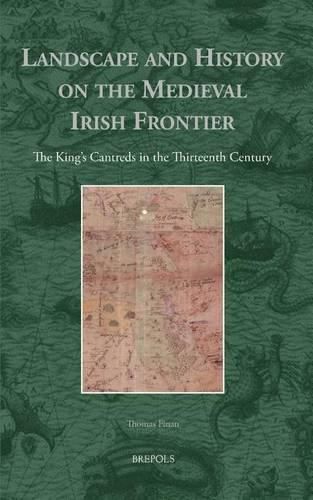Readings Newsletter
Become a Readings Member to make your shopping experience even easier.
Sign in or sign up for free!
You’re not far away from qualifying for FREE standard shipping within Australia
You’ve qualified for FREE standard shipping within Australia
The cart is loading…






This work offers a new and innovative insight into the history of thirteenth-century Ireland by exploring the interplay between Gaelic lords, Anglo-Norman lords, and the medieval environmental landscape that connected them. Focusing on the king’s cantreds of Roscommon, a space that was both the homeland of the O'Conor royal authority from the eighth century and a defined holding of the English kings from the early thirteenth century, the book explores the frontier landscape as an active player in its own right within Irish history and discusses the way that both Gaels and Anglo-Normans interacted with, and were in turn influenced by, this environment. This unique approach to Irish history enables the author to step away from the traditional view of a dyadic relationship between Gaelic and Anglo-Norman lords and instead demonstrate that not only did both sides alter and change the environment around them according to their perceptions of their enemies and the threat posed by the land, but that the landscape itself was to play a significant role in shaping and influencing the identities and destiny of its inhabitants.
$9.00 standard shipping within Australia
FREE standard shipping within Australia for orders over $100.00
Express & International shipping calculated at checkout
This work offers a new and innovative insight into the history of thirteenth-century Ireland by exploring the interplay between Gaelic lords, Anglo-Norman lords, and the medieval environmental landscape that connected them. Focusing on the king’s cantreds of Roscommon, a space that was both the homeland of the O'Conor royal authority from the eighth century and a defined holding of the English kings from the early thirteenth century, the book explores the frontier landscape as an active player in its own right within Irish history and discusses the way that both Gaels and Anglo-Normans interacted with, and were in turn influenced by, this environment. This unique approach to Irish history enables the author to step away from the traditional view of a dyadic relationship between Gaelic and Anglo-Norman lords and instead demonstrate that not only did both sides alter and change the environment around them according to their perceptions of their enemies and the threat posed by the land, but that the landscape itself was to play a significant role in shaping and influencing the identities and destiny of its inhabitants.